Great Yarmouth: Clear-up begins after World War Two bomb explodes
- Published
People on social media said they felt buildings shake from the blast 15 miles (24km) away
Clear-up operations are under way after a World War Two bomb exploded while work was carried out to defuse it.
Army specialists were attempting to disarm the device at Bollards Quay in Great Yarmouth on Friday when an unplanned detonation happened at about 17:00 GMT.
People on social media said they heard a loud bang and felt buildings shake 15 miles (24km) away.
Southtown Road where the bomb was being detonated has now re-opened.
The blast broke some car windows, affected scaffolding on the under-construction road bridge, and damaged the flood wall.
Residents have been allowed to return to their homes and the army has been leaving the site.
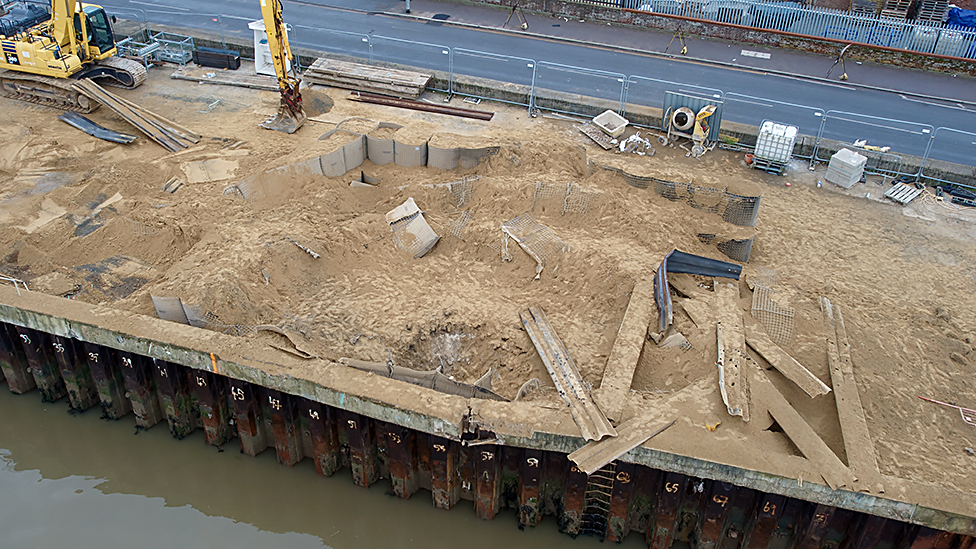
The impact of the blast was contained by the sand wall built around the device
Norfolk Police said the army specialists "always planned for the possibility" of the bomb detonating.
No-one was injured in the blast, Norfolk Police said.
Environment Agency engineers would inspect the damaged river wall, but initial assessments showed the flood defence had not been compromised, police added.
Debris has been cleared from the road and the nearby tower crane was checked to ensure it was still safe.
Watch: WW2 bomb goes off in unplanned detonation
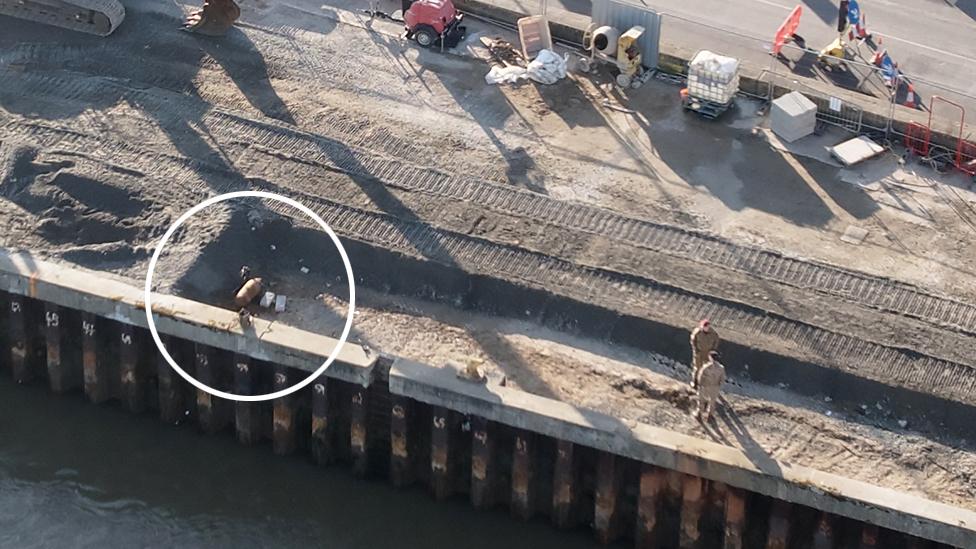
The device was discovered by a contractor working on a crossing over the River Yare
Sherylanne Hodgins is manager and owner of Avery Lodge care home on Southtown Road which was just inside the larger cordon.
"Watching that debris fly through the sky, I was just so relieved that the people within that 200m boundary were not there, that there were no people in the street, and that there were no cars," she said.
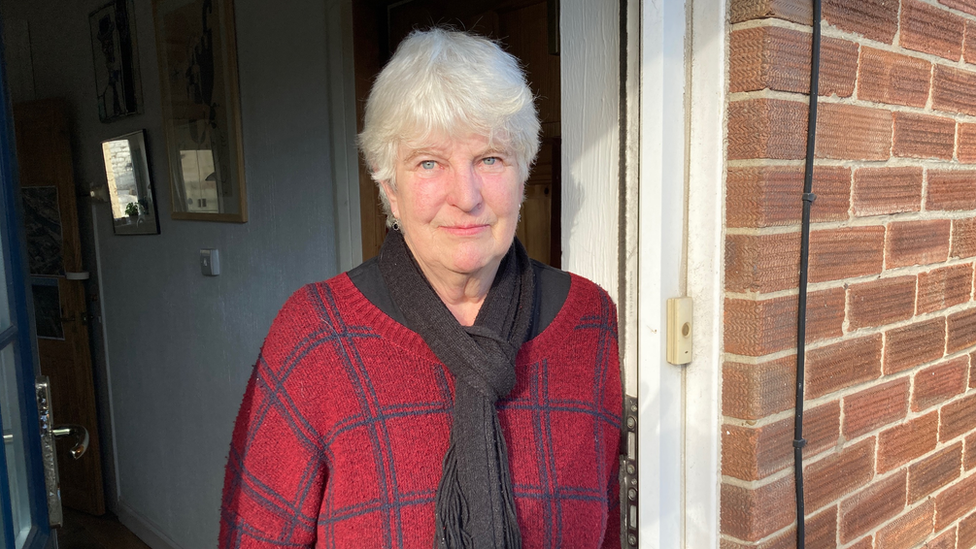
Bridget Heriz relieved to return to her Southtown Road home after leaving on Wednesday
Bridget Heriz, 73, left her home in Southtown Road on Wednesday and stayed with a friend nearby.
"We definitely heard the bang but luckily didn't feel it," she said.
"I'm not all that surprised they discovered the bomb. This house was bombed in the war, it was [built] on a bombsite.
"Except that they'd been surveying the river a long time before the construction started, so I'm not sure why they didn't discover the bomb then.
"I was tearful when I got back last night, so I think I was much more worried than I realised. I'm so relieved."

The detonation caused a large explosion, with debris seen blasting into the air
The device - about 1m (3.2ft) long and weighing about 250kg (39st 5lbs) - was discovered on Southtown Road by a contractor working on the third crossing over the River Yare.
Cordons at 200m (656ft) and 400m (1,312ft) from the bomb were put in place when the device was first discovered close to two gas pipes on Tuesday, and work began to make it safe.
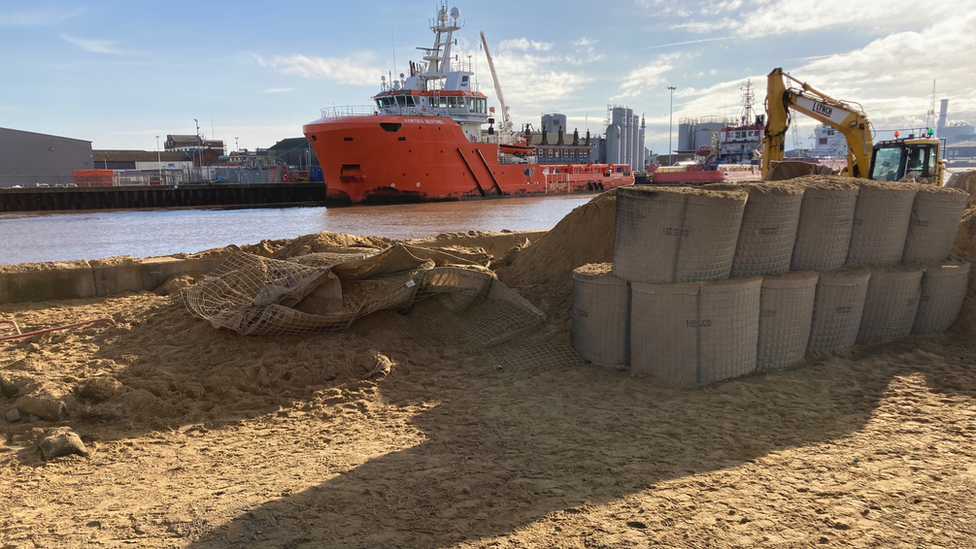
A cordon of sand bags helped reduce the impact of the bomb exploding
Area commander Supt Nathan Clark said the explosion "was always a possibility". However, he said safety measures put in place, including a sand barrier, "appear to have worked".
The force said agencies had "assessed the damage caused by the explosion with a number of car windows broken, the top of the scaffolding on the bridge affected and some damage to the flood wall".
A spokesperson for Cadent, which manages the local gas mains network, said on Friday: "There is no indication that the blast has caused damage to our assets and gas continues to flow safely."

Army specialists had initially been planning to cut into the bomb and perform a controlled explosion on Thursday, before taking the remainder of the device out to sea or to a military range for another detonation.
They started the process by using a robot to cut the fuse and trigger at about 17:30 GMT on Thursday, but abandoned this when water from the cutting process destabilised part of the sand barrier.
A decision was then made to switch to a slow burn technique, which was being carried out when the device exploded.

Find BBC News: East of England on Facebook, external, Instagram, external and Twitter, external. If you have a story suggestion email eastofenglandnews@bbc.co.uk, external
Related topics
- Published10 February 2023
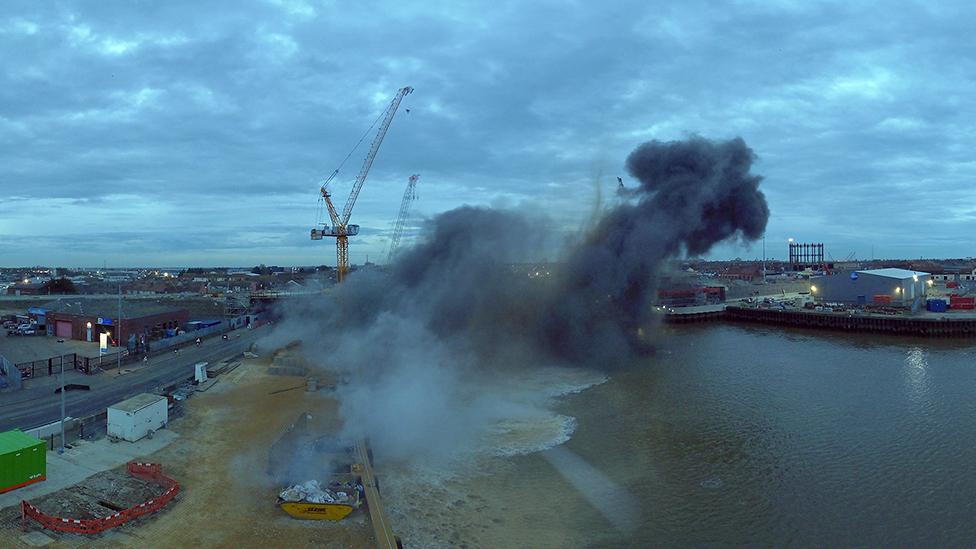
- Published10 February 2023

- Published10 February 2023

- Published10 February 2023

- Published9 February 2023

- Published8 February 2023
